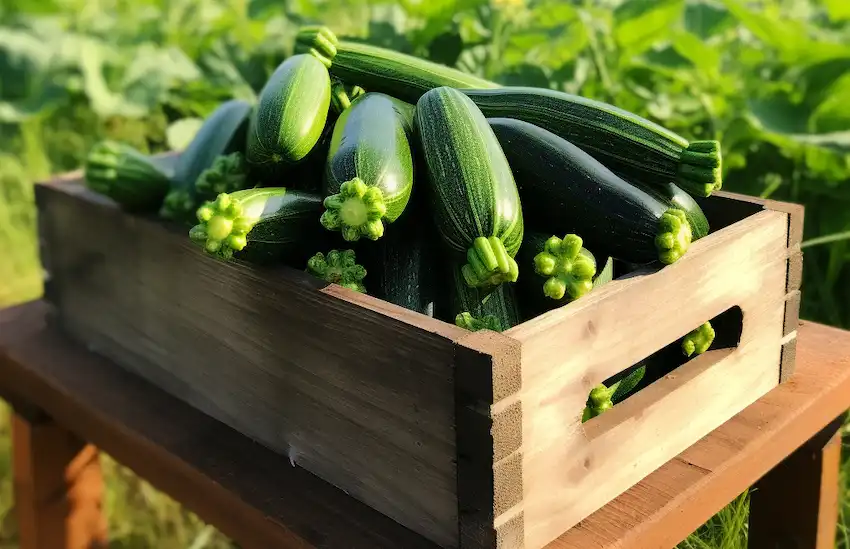Learn How to Grow Zucchini Vertically and Save Space
Gardening enthusiasts often face a dilemma when they run out of horizontal space. But there’s good news for those who adore zucchini (also known as courgette). You can grow this summer squash vertically, saving space and enjoying an abundant yield. Let’s explore the step-by-step guide to growing zucchini in a vertical fashion.

Benefits of Growing Zucchini Vertically
- Space-saving: This is the most obvious benefit. Growing vertically makes use of upward space, making it suitable for small gardens, patios, or balconies.
- Better air circulation: Elevating the plant prevents it from sitting on damp soil, ensuring better ventilation and reducing risks of fungal diseases.
- Ease of harvest: With fruits hanging at different levels, it’s easier to spot and pick mature zucchinis.
- Less soil-borne disease: Raising the plant off the ground reduces its exposure to pests and soil-borne diseases.
How to Grow Zucchini Vertically: A Step-by-Step Guide
1. Choose the Right Variety:
Start by choosing bush or vining zucchini varieties that are more suitable for vertical growth. Varieties like ‘Black Forest’, ‘Climbing Zucchini’, and ‘Tromboncino’ are known for their ability to climb.
2. Preparing the Soil:
Like most vegetables, zucchinis prefer well-draining soil, enriched with organic compost. Ensure the soil has a pH level of 6.0 to 7.5.
3. Provide a Sturdy Support:
Zucchini plants can be heavy, especially when laden with fruit. Opt for strong trellises, cages, or netting to support the weight. Ensure the support structure is at least 5-6 feet tall.
4. Planting:
Plant zucchini seeds or seedlings at the base of your support structure. If planting seeds, sow them an inch deep and about 2-3 feet apart to give ample space for each plant to grow.
5. Training the Plant:
As the zucchini plant grows, gently guide the vines onto the trellis or support structure. You can use soft ties or garden twine to hold them in place without damaging the stems.
6. Pruning:
Pruning helps in directing the plant’s energy to fruit production. Remove any dead or diseased leaves and the lower leaves to boost vertical growth and improve air circulation.
7. Watering:
Zucchinis need consistent moisture. Water them deeply at the soil level, avoiding the foliage to minimize the risk of fungal diseases.
8. Harvesting:
Zucchinis are best harvested when they’re about 6-8 inches long. Regular harvesting promotes continuous production. Use a sharp knife or scissors to cut the fruit from the plant.

Tips for Vertical Zucchini Growing
- Pest control: Watch out for common pests like squash bugs, vine borers, and aphids. Implement natural predators or organic insecticides to manage them.
- Fertilizing: Zucchinis are heavy feeders. Use a balanced vegetable fertilizer to nourish your plants.
- Rotate crops: Avoid planting zucchini in the same spot year after year. This will help prevent soil-borne diseases.
Growing zucchini vertically is a game-changer for gardeners with limited space. Not only does it maximize the use of available space, but it also offers numerous advantages in terms of plant health and yield. With a little effort and the right care, you can enjoy a bountiful zucchini harvest without letting them sprawl all over your garden. Happy gardening!
The Delicious Snack With Zucchini That’s Secretly Boosting Your Health!



















